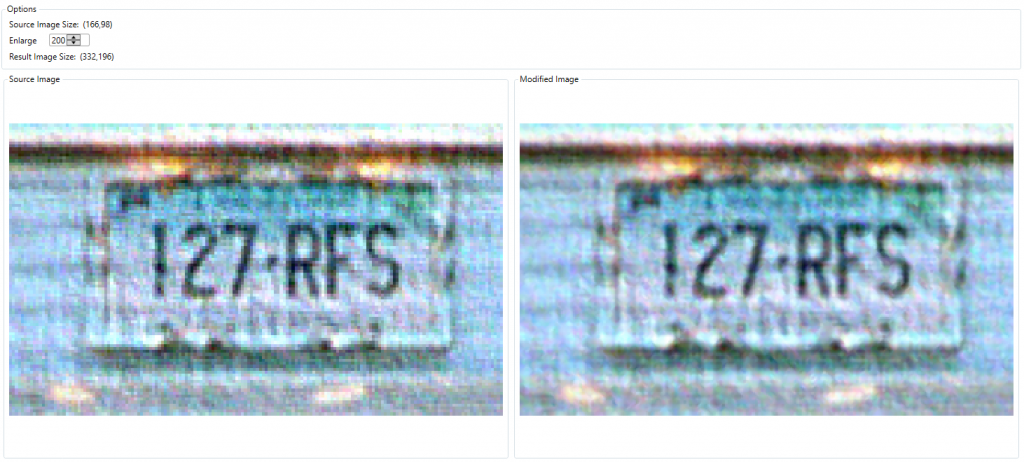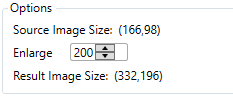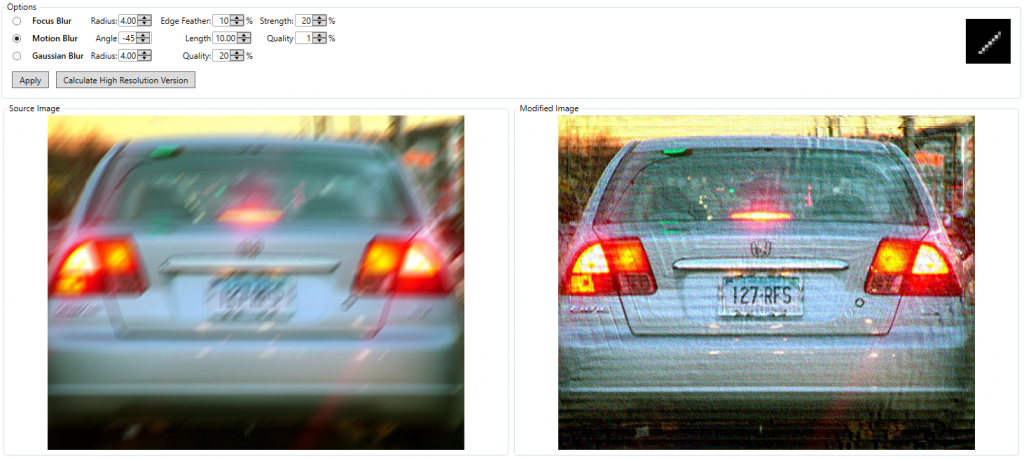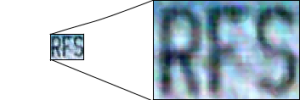Having moved into the advanced section last week with histogram edits, The Clarification Chronicles continues this week by looking at the deblur and superresolution options.
Deblur 
DeBlur uses a ‘Fast Fourier Transform’ to reverse certain types of image blur. The key to ‘deblur’ is modelling how the blur happened – did the camera move, and how much and in which direction? This model is called the ‘kernel’ and is shown on the right hand side of the options menu.
 In the example above the camera moved 10 pixels at an angle of -45 degrees, causing motion blur. The resulting kernel can be seen on the right. The software uses this kernal to undo the blur mathematically. Focus and Gaussian options are different modes of non-moving blur. ‘Focus’ uses a ‘flat’ kernel while Gaussian has more weighting (i.e. importance) for the central part of the kernel.
In the example above the camera moved 10 pixels at an angle of -45 degrees, causing motion blur. The resulting kernel can be seen on the right. The software uses this kernal to undo the blur mathematically. Focus and Gaussian options are different modes of non-moving blur. ‘Focus’ uses a ‘flat’ kernel while Gaussian has more weighting (i.e. importance) for the central part of the kernel.
Deblur needs high resolution images to work. Poor quality CCTV or video that has been heavily compressed usually can’t be recovered.
Superresolution 
 Superresolution is used to enhance the resolution of an image.
Superresolution is used to enhance the resolution of an image.
 The enlarge settings in options set by what percentage you want to increase the resolution of the image. Above you can see the original resolution of the image where below shows the resulting image resolution.
The enlarge settings in options set by what percentage you want to increase the resolution of the image. Above you can see the original resolution of the image where below shows the resulting image resolution.






 [/one_third][two_third last=”yes” spacing=”yes” center_content=”no” hide_on_mobile=”no” background_color=”” background_image=”” background_repeat=”no-repeat” background_position=”left top” border_position=”all” border_size=”0px” border_color=”” border_style=”” padding=”” margin_top=”” margin_bottom=”” animation_type=”” animation_direction=”” animation_speed=”0.1″ class=”” id=””]
[/one_third][two_third last=”yes” spacing=”yes” center_content=”no” hide_on_mobile=”no” background_color=”” background_image=”” background_repeat=”no-repeat” background_position=”left top” border_position=”all” border_size=”0px” border_color=”” border_style=”” padding=”” margin_top=”” margin_bottom=”” animation_type=”” animation_direction=”” animation_speed=”0.1″ class=”” id=””]